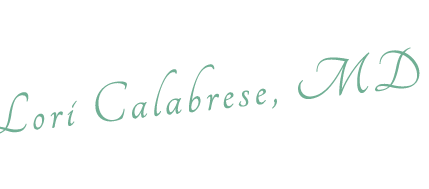Charlene could not remember a time when she wasn’t depressed. A series of tragedies in her family along with psychiatric disorders in her relatives, all seemed to lead to her own depression. Antidepressants she’d taken for years seemed to do very little. Regardless of dosage or ration, she’d long ago lost hope that she’d every be better. Some people just had to live a life of wasted dreams. Dull. Flat. Empty.
That’s how she felt.

She’d tried to go to college, but found she was too unstable. She wanted to excel. But lack of motivation and dread seemed to have far more power over her than good intentions. She knew someone who went for IV ketamine maintenance infusions… but who knows? A lifetime of depression had tainted her, dulled her. She guessed the person she was must have become molded around the depression that had ruled her for so long. She hated herself, soaked herself in shame. Worth NOTHING. No education, no accomplishments, nada.
She wondered how she could ever be any different.

Now she had passed her 31st birthday, and she’d heard about ketamine treatment…she was thinking she might invest in it for a birthday present to herself. So she scoured the internet to learn what this treatment could do, and whether she should put hope in it.
The more she read, the more she learned, and her confidence and hope grew. So she called for an appointment. She wondered if ketamine infusions would work. And if she would need IV ketamine maintenance infusions.
She wanted an expert who really knew what they were doing. She wanted someone who would know what to do with severe symptoms. Symptoms that resisted everything. And everyone’s effort. She really wanted to find someone who was an expert in treating what she’d been told she had: treatment-resistant depression.
To find a psychiatrist who emphasized treating each patient individually, with remission as the hopeful goal.
She felt blamed. Like SHE was resistant. But she wasn’t. She did everything, took everything, tried to meditate in the morning, walked outside everyday, posted stickies on her mirror. Which she thought was stupid. And pointless.
Because none of it worked.
So was she just going to end up going to someone who would say, yeah, year, oh sure. ketamine? yes, you should do that …
She wasn’t born yesterday. Nor was she an idiot. She didn’t need a yes-man or a yes-woman, or a yes-doctor, for Pete’s sake. Who would just plop her down and promise her the world.
Here’s what she found: a place where she met a doctor who really wanted a ton of background information. Who took the time to collect it and read it and spent an hour with her before even getting to ketamine. (Not someone who did a phone screen. Nor someone who accepted someone else’s word for what she had. And not someone who interviewed her in a treatment chair.) Someone who wanted to know her story and her backstory. Who asked her questions that weren’t checklists. And someone who told her she was looking for all the factors that might indicate that ketamine could be helpful to her AND…all the things that she had working against her, that might make ketamine NOT work so well for her.
She was bowled over.
What if this actually worked? And if it did, was she going to need IV Ketamine Maintenance Infusions?
A Plan for Charlene
Lots of talk. Lots of tears.
And then the treatment started. Charlene received a series of infusions over a couple of weeks. Six to be exact. And she could feel some change — but not enough. Then, she was hospitalized and in the ICU for 9 days… The severity of her condition, the stress of it on her body and mind, resulted in her losing the improvement she thought she felt after the sixth infusion.
She called the psychiatrist. Why would it fade so fast? Did that mean it wasn’t working? That it was never going to work? That it would be like every other thing she had tried?
She was encouraged to have two more infusions. Here is where she got a migraine. She wasn’t sure it was worth it …the money! She wasn’t sure SHE was worth it.
But she got 2 more infusions. She didn’t know if 2 more were considered IV Ketamine Maintenance Infusions or not. Still, she began to improve dramatically, but was under pressure to move to a new place. The extreme stress of moving under pressure with the earliest hints of remission blooming was too much.

Once again, the benefits of the ketamine treatment seemed to lapse. So she went in about 2 months later, and had another infusion. In all of them, her dose and rate were titrated to support dissociation.
The goal was to get well — sustainedly well — and stay well.
That’s what she wanted. That’s what her doctor wanted.
(Isn’t that what everyone wants?)
The next morning, Charlene reported learning a new song in her dream. She sang it for her family. Someone told a little dad joke, and she exploded into laughter…with her eyes shining.
This never happened with her.
Her family told her she used to sing for them when she was a preschooler.
Early Signs of Remission
That was just the beginning. Over the next couple of months she became more and more lighthearted, hopeful and joyful. She began building the friendships that had lapsed during her depressed years.
It was as if the real person she was…the one that emerged from infancy… had replaced that person she thought was irrevocably tainted by depression.
About four months later, she was sick and in the ICU again. But once she recovered, her remission remained solid. A year ago she had to go through a massive move involving her mother’s abandoned belongings, and years of her own belongings that had stacked up during her depression.
And her resilience stood strong.
Feeling well was her goal. STAYING well was her goal. It’s called REMISSION.
And she got there with an approach that was not cookie cutter. It’s a wellness model, not a business model.
Her remission remained intact, and she maintained a light heart throughout the process of packing, throwing away old mementos of dear family members who’d died, and hauling off items she wanted to donate to charity. It was a gripping experience in addition to exhausting. But she felt resilient.
Her remission remained solid.

Two years later she married a warm, loyal, and kind man her family loved. The stress of planning a wedding will bring many brides to their knees, but she remained strong and flexible through the process.
She was so glad to be alive. And to be in love. She never took a single day for granted.
Somehow her physical health has also improved dramatically along with her emotional health. She had given up on antidepressants when she originally went in for ketamine treatment, and hasn’t looked back. It has been three years and she’s never had another booster or IV ketamine maintenance infusion.
Maintenance Infusions: Yes or No?
Each Person is Unique with Unique Needs for Treatment
Charlene is not like anyone else. Of course not. Every person is different. But the questions that came up for her after her series of infusions come up for lots of people. Do I need more? How do I know if it will be worth it? How frequently should I have them?
What’s the data really, about that?
Turns out there’s not a lot of data about maintenance treatment out there.
A recent retrospective chart review from Massachusetts General Hospital (my old stompin’ grounds!) looked at a group of 85 outpatients who received 2 ketamine infusions a week for 3 weeks starting at 0.5 mg/kg.
The study followed these patients naturalistically — that means their outpatient psychiatrists could change their medications and they could change their therapists or the therapy they were getting while they were going through their infusions.
Although the response to the first 6 infusions using was only modest, and the drop-out rates were high, about 47% of the patients went on to receive maintenance infusions and 33% continued maintenance.
The investigators attributed this to the patients perceiving benefit from continued treatment. They received an average of an additional 2.3 +/- 1.5 infusions during maintenance.
We applaud these efforts. Research is long, hard, and time-consuming.
I think one of the things this study points out is that a one-size-fits-all approach to treatment doesn’t yield the most beneficial outcomes. Because one size doesn’t fit all. And just like with antidepressants, one strength doesn’t fit all. We need more research on dosing, titration, and schedules.
Each Doctor Chooses What He or She Believes is the Best Course
Medicine is both an art and a science. We’re deeply steeped in the science (from Wellesley, Hopkins, and Harvard …how could you not be?) — and we’re deeply committed to the art.
We bring the best of what we’ve learned, the best of what we know, and the best of who we are to you.
At Innovative Psychiatry, we just don’t use a one-size-fits-all approach to depression treatment. Or to ketamine treatment. We don’t now and we never have since the beginning. With each patient we tease apart symptoms and medical history, along with the patient’s experiences and descriptions to find what’s needed for that particular patient. We custom fit the infusion protocol and recommendations between visits to each individual patient.
See how that’s worked in a young woman with anorexia. Her anorexia has been in remission now for 10 months and counting.
It’s a wellness approach to treatment because we want to see our patients achieve remission in every case possible.
It means doing our homework, staying up late and scouring the reading, to find out what other experts have experienced, learned, and tried. Going to conferences. (Well, staying at home and logging in to conferences now!) Then applying what we learn to each patient according to his or her specific needs.

Because it’s all a vital part of helping each patient achieve remission. Some patients may need maintenance infusions, and when they do, we make it part of our wellness approach to their ketamine treatment.
Overall, remission is the goal. We can’t promise it, but we do everything we can to make it possible.
We want you well.
Or as close to well as possible.
We want to see you enjoying your life, investing in your future, and in healthy, strong relationships… and the things you most like to do.
Give yourself the chance to live the best life you can live.

To the restoration of your best self,
